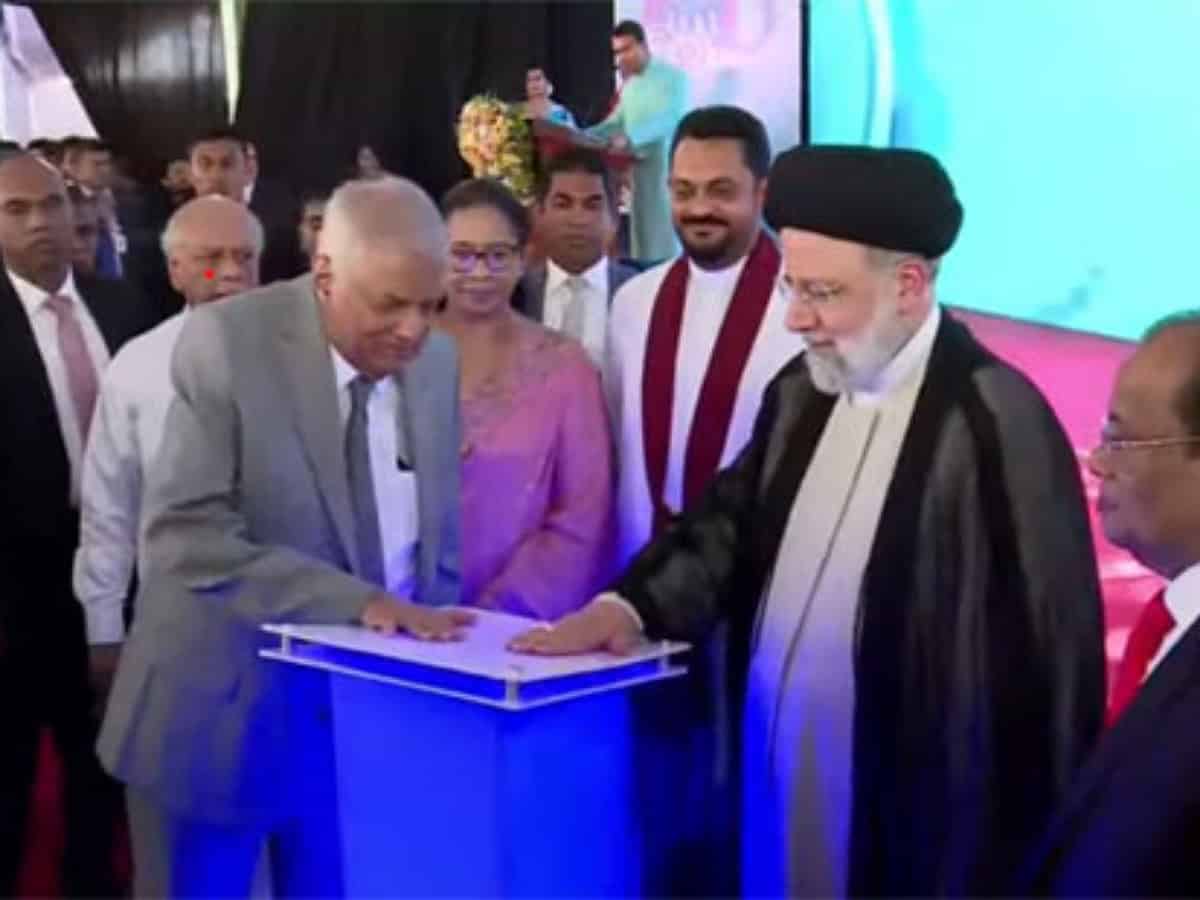
Colombo: Iran’s President Ebrahim Raisi on Wednesday inaugurated a USD 514 million (Rs 42,82,59,66,000) hydropower project in the southeastern region of Sri Lanka which was partly funded by Tehran and was long-delayed due to international sanctions on the oil-rich nation.
This was the first visit by an Iranian president to Sri Lanka since an April 2008 visit by its then-president Mahmoud Ahmadinejad.
Raisi was received by Prime Minister Dinesh Gunawardena on his arrival at the southern province’s Mattala International Airport earlier in the day. Tight security was in place with roads being closed for normal traffic as the Iranian president was driven to the project inauguration site where he was met by Sri Lankan President Ranil Wickremesinghe.
During the inauguration, Raisi said Tehran was happy to assist the Uma Oya Multipurpose Development Project (UOMDP) to forge closer ties between the people of Iran and Sri Lanka. Iranian engineers worked on the project to see its success.
Wickremesinghe in his address said he looks forward to Sri Lanka and Iran making joint progress as members of the Global South. He said Sri Lanka is grateful to Iran for the technical support provided to UMODP, the second-largest irrigation project in the island after the Mahaweli River diversion project in the 1980s.
According to a press release issued by the Sri Lankan government, the UMODP project costing USD 514 million was kicked off with USD 50 million provided by Iran.
The Sri Lankan government and Farab Energy and Water Projects (Farab Company) of Iran agreed in April 2008 to implement the project. The total contract sum amounted to USD 514 million and the Export Development Bank of Iran (EDBI) funded USD 50 million until 2013.
However, due to international sanctions imposed on Iran later that year, Tehran was unable to continue providing funds for the project. Subsequently, Sri Lanka decided to proceed with the project using government funds while continuing with the same contractor, Farab Company, the release said.
The project would add 290 GWh to the national grid, while supplying water to 4,500 hectares of new agricultural land and 1,500 hectares of existing farmland and would meet the drinking water needs of thousands of families in Badulla, Monaragala and Hambantota districts.



